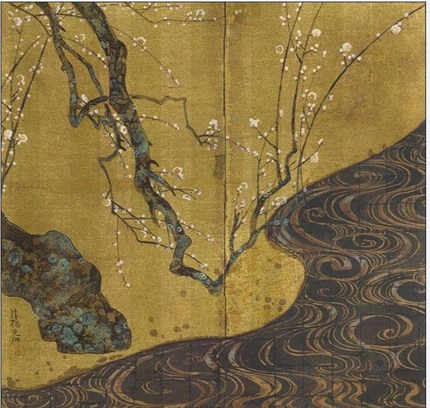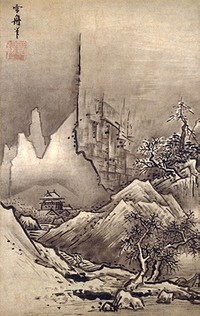Ogata Korin (1658-1716) White prunus

Before and in the Meiji period(1868-1912) young Japanese painters were very much impressed by the realism of Western (European) painting. Most of them were educated in traditional Japanese painting. In Japanese painting, influenced by Chinese painting, the approach of reality was quite different, much less objective. Technically the differences between Western and Eastern art were substantial too. The Japanese worked with ink or water based paint, they used soft brushes. Paper and silk were the most important bearers. The use of colour was limited, often monochrome or polychrome.( see above and at the upperleft).
When the Americans in 1855 forced the opening of Japan, the Tokugawa government was not in the least interested in the artistic value of Western painting. They approached Western art strictly utilitarian and focussed on the technique of exactly portraying reality in service of the economic development and military skills like cartography.
In order to acquire and spread the Western knowledge the Japanese government established schools for Western painting. Kawakami Togai headed the first Western painting school established in 1861 by the Tokugawa government. He was a military man and samuarai but also had some credit as a Japanese Nanga style painter. It took him a year to acquire painting materials from Europe (oilpaint, brushes, pigments ). He considered Western painting as a technique rather than as a distinct way of artistic expression. So for the Tokugawa government he was at that moment the right man in the right place.

